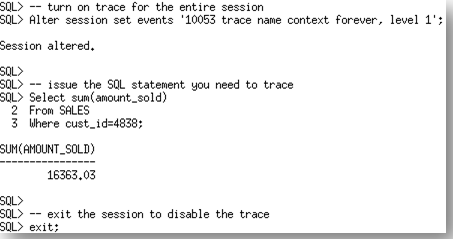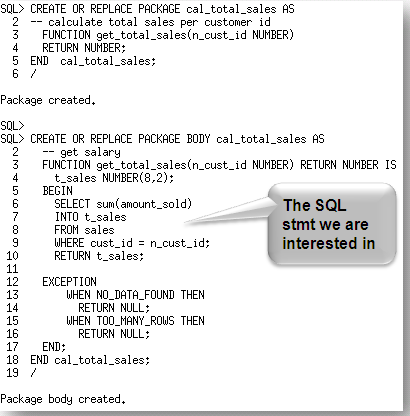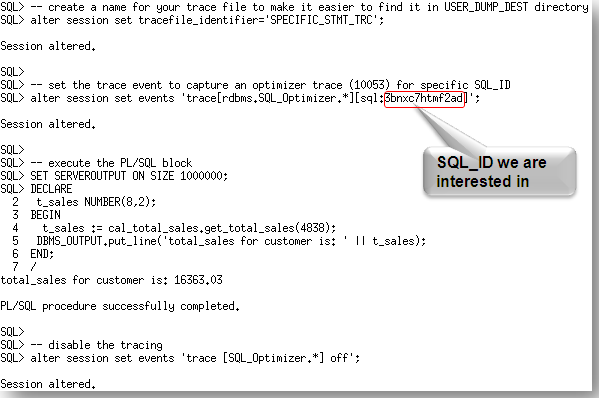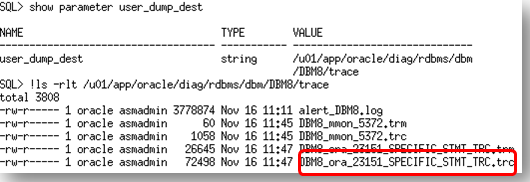Traditionally if you wanted to capture an Optimizer trace (10053) for a SQL statement you would issue an alter session command to switch on a 10053 trace for that entire session, and then issue the SQL statement you wanted to capture the trace for. Once the statement completed you would exit the session to disable the trace. You would then look in the USER_DUMP_DEST directory for the trace file.

But what if the SQL statement you were interested in was actually called as part of a PL/SQL package? Oracle Database 11g, introduced a new diagnostic events infrastructure, which greatly simplifies the task of generating a 10053 trace for a specific SQL statement in a PL/SQL package. All you will need to know is the SQL_ID for the statement you are interested in. Instead of turning on the trace event for the entire session you can now switch it on for a specific SQL ID. Oracle will then capture a 10053 trace for the corresponding SQL statement when it is issued in that session. Remember the SQL statement still has to be hard parsed for the 10053 trace to be generated. Let’s begin our example by creating a PL/SQL package called ‘cal_total_sales‘.

The SQL statement we are interested in is the same as the one in our original example, SELECT SUM(AMOUNT_SOLD) FROM SALES WHERE CUST_ID = :B1. We need to know the SQL_ID of this SQL statement to set up the trace, and we can find in V$SQL.

We now have everything we need to generate the trace.

Finally you would look in the USER_DUMP_DEST directory for the trace file with the name you specified.

